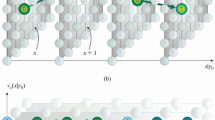Abstract
This paper describes a new algorithm for solving the stereo correspondence problem with a global 2-d optimization by transforming it into a maximum-flow problem in a graph. This transformation effectively removes explicit use of epipolar geometry, thus allowing direct use of multiple cameras with arbitrary geometries. The maximum-flow, solved both efficiently and globally, yields a minimum-cut that corresponds to a disparity surface for the whole image at once. This global and efficient approach to stereo analysis allows the reconstruction to proceed in an arbitrary volume of space and provides a more accurate and coherent depth map than the traditional stereo algorithms. In particular, smoothness is applied uniformly instead of only along epipolar lines, while the global optimality of the depth surface is guaranteed. Results show improved depth estimation as well as better handling of depth discontinuities. While the worst case running time is O(n1.5 d1.5 log(nd)), the observed average running time is O(n1.2 d1.3) for an image size of n pixels and depth resolution d.
Similar content being viewed by others
References
Baker, H.H. 1981. Depth from Edge and Intensity Based Stereo. Ph.D. Thesis. University of Illinois at Urbana-Champaign.
Belhumeur, P.N. 1996. A Bayesian approach to binocular stereopsis. Int. J. Computer Vision, 19(3):237–260.
Boykov, Y., Veksler, O., and Zabih, R. 1998. Markov random fields with efficient approximations. In Proc. of IEEE Conference on Computer Vision and Pattern Recognition, Santa Barbara, CA.
Cormen, T.H., Leiserson, C.E., and Rivest, R.L. 1990. Introduction to Algorithms. McGraw-Hill: New York.
Cox, I.J. 1994. A maximum likelihood N-camera stereo algorithm. In Proc. of IEEE Conference on Computer Vision and Pattern Recognition, pp. 733–739.
Cox, I.J., Hingorani, S., Maggs, B.M., and Rao, S.B. 1996. A maximum likelihood stereo algorithm. Computer Vision and Image Understanding, 63(3):542–567.
Faugeras, O. 1993. Three-Dimentional Computer Vision. MIT Press: Cambridge.
Goldberg, A.V. and Rao, S.B. 1997. Length functions for flow computations. Technical Report 97-055, NEC Research Institute, Princeton, NJ.
Greig, D.M., Porteous, B.T., and Scheult, A.H. 1989. Exact maximum a posteriori estimation for binary images. J.R. Statist. Soc., 51(2):271–279.
Ishikawa, H. and Geiger, D. 1998. Segmentation by grouping junctions. In Proc. of IEEE Conference on Computer Vision and Pattern Recognition, Santa Barbara, CA.
Kanade, T., Yoshida, A., Oda, K., Kano, H., and Tanaka, M. 1996. A stereo machine for video-rate dense mapping and its new applications. In Proc. of IEEE Conference on Computer Vision and Pattern Recognition, San Francisco.
Kang, S.B., Webb, J.A., Zitnick, C.L., and Kanade, T. 1994. An active multibaseline stereo system with real-time image acquisition. Technical Report CMU-CS-94-167, School of Computer Science, Carnegie Mellon University.
Marr, D. and Poggio, T. 1979. A theory of human stereopsis. Proceedings of the Royal Society, B 204:301–328.
Ohta, Y. and Kanade, T. 1985. Stereo by intra-and inter-scanline using dynamic programming. IEEE Trans. Pattern Analysis and Machine Intelligence, 7(2):139–154.
Roy, S. and Cox, I.J. 1998. A maximum-flow formulation of the n-camera stereo correspondence problem. In Proc. Int. Conference on Computer Vision, Bombay, India, pp. 492–499.
Yang, Y. and Yuille, A.L. 1995. Multilevel enhancement and detection of stereo disparity surfaces. Artificial Intelligence, 78:121–145.
Rights and permissions
About this article
Cite this article
Roy, S. Stereo Without Epipolar Lines: A Maximum-Flow Formulation. International Journal of Computer Vision 34, 147–161 (1999). https://doi.org/10.1023/A:1008192004934
Issue Date:
DOI: https://doi.org/10.1023/A:1008192004934




